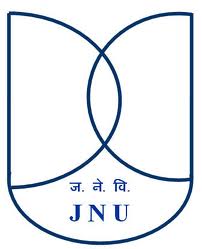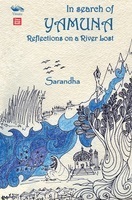Yamuna
Photo exhibit on water conservation - Delhi's might, Renuka's plight - JNU Art and Aesthetics School, Delhi, September 26 – October 2, 2011
Posted on 30 Sep, 2011 08:19 PMPhoto Exhibit: Delhi's might, Renuka's plight - 26th Sept-2nd Oct
Venue: Art & Aesthetics Gallery, JNU Campus, New Delhi

The School of Arts and Aesthetics, JNU is one of the few places in India that offers post-graduate degree courses in the theoretical and critical study of the cinematic, visual and performing arts. Moreover, it is the only place in India where these disciplines are offered in an integrated programme that allows students to understand the individual arts in a broader context of history, sociology, politics, semiotics, gender and cultural studies apart from being able to integrate the study of one art form with the other arts. The three streams of study offered at the school are Visual Studies, Theatre & Performance Studies and Cinema Studies.
Hathinikund barrage at Tajewala, Haryana,a complete failure: Press release by Maan Mandir Seva Sansthan
Posted on 11 May, 2011 01:16 PMAs you are aware of the fact that the Government has constituted an inspecting body comprising of high authority personnel’s of Central Water Commission, Planning Commission, Haryana Irrigation Department, Delhi Jal Board, Ministry of Environment and Forests and 6 members of Yamuna Bachao Aandolan. The team will then submit its report to the Central Government within one week and forthcoming plans will be discussed then.
The team had visited the Hathinikund barrage and told that it was a complete failure as the water is not at all being released from Hathinikund barrage. They came to know about the matter after enquiring with local public. The imposter authorities had released the said amount (160 cusecs) of water. The local public there told that they are habitual of crossing the Yamuna by riding on their bikes as it remains completely dry, but the water has been released.
"In Search of Yamuna: Reflections on a River Lost" - A recent book as an ode to rivers
Posted on 27 Apr, 2011 02:26 PMAbout the book
 In the present mood of transience and conflict, amidst the emerging riverfront politics, these communities seem to be caught in the eye of the storm.
In the present mood of transience and conflict, amidst the emerging riverfront politics, these communities seem to be caught in the eye of the storm.
Death of a river - On the Yamuna in Delhi - Article from Kafila
Posted on 15 Apr, 2011 08:52 AMThis was first presented as a paper in a seminar on “The River” organised by the Max Muller Bhawan on 11 and 12 December 2010. Photo credits: Gigi Mon Scaria, Himanshu Joshi and Sohail Hashmi.
Irrigation in India - Management phases and its sustainability - Paper presented at the National Seminar on Water and Culture (2007)
Posted on 13 Feb, 2011 10:52 PMSince time immemorial water has been a common property and in many Indian communities there is deep reverence for flowing water. Using the flow of water for community benefit is considered an act of great merit and its misuse and contamination, a sin. In temples, tanks were constructed for rituals and also as a way to earn money for the temple.
Groundwater flow modelling and aquifer vulnerability assessment in Yamuna–Krishni sub-basin of Muzaffarnagar district – A study by Central Ground Water Board and Aligarh Muslim University
Posted on 02 Feb, 2011 08:24 AMThis report by Aligarh Muslim University and Central Ground Water Board (CGWB) deals with groundwater flow modelling and aquifer vulnerability assessment in Yamuna–Krishni sub-basin of Muzaffarnagar district. For evaluation of the groundwater resources and for minimizing the error of estimation, the system has been evaluated through aquifer modelling where water balance is established using partial differential equation of groundwater flow and is solved with boundary and initial boundary conditions.
Mining - An increasing threat to our rivers - Article by Nitya Jacob
Posted on 20 Dec, 2010 12:29 AMContent Courtesy: Solution Exchange and Nitya Jacob
Author: Nitya Jacob
India’s arteries are choking. Her rivers, the lifeline of hundreds of millions, are over-taxed, polluted and encroached. They are being mined, dammed and emptied of water. Save for the four monsoon months, most rivers are streams of drains, depending on how many cities they pass through. This year people gaped in awe at the River Yamuna (I am sure they were over-awed by other rivers elsewhere too) as for the first time since 1978 looked like a river and not a drain.
Himalayi Jan Goshnapatra: Himalayi Niti Ka Prarup – A report in Hindi by the Gandhi Peace Foundation
Posted on 18 Dec, 2010 08:19 AMThis document in Hindi prepared by the Gandhi Peace Foundation, is a blueprint of the Himalayan People's Manifesto. The manifesto has been brought out with the help of various documents prepared by various people and organisations at different times. It will be finalised by the next Himalayan Day on September 9, 2011.
On the brink: Water governance in the Yamuna river basin in Haryana
Posted on 08 Dec, 2010 10:07 PMThis study attempts to develop a case study of the Western Yamuna Canal Command in Haryana with the purpose of developing a general picture of the institutional environment and arrangements related to water resource development and use in the State of Haryana. It is based on a review of water law, policy and administration and helps draw conclusions on whether the existing governance systems are meeting the current needs and suggests alternate options. The study has attempted to test the following hypothesis –
The myth of flood controls - A note by Dinesh Kumar Mishra
Posted on 18 Sep, 2010 04:41 PMIn the light of the recent major floods in river Yamuna, the enclosed article that deals with the question and futility of man made structures like dams and embankments to control floods may be found useful.
But it is unfortunate that even this otherwise very insightful article does not reflect anywhere on the fact that the floods in monsoon months are natural events and should be acknowledged and planned for accordingly.
There is a need to better understand the phenomenon of floods and not to treat them as some kind of natural calamity requiring artificial man made safeguards.
It may be noted that Dr D K Mishra who has studied the floods in river Kosi for decades has been making these points for many years now. It is necessary to heed to people like him if we do not wish to invite more trouble in future.